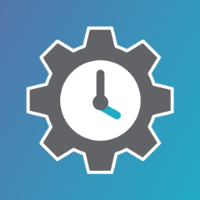
Between January 2019 and March 2022, retail and hospitality businesses using a specific full-featured labor management software suite experienced employee turnover rates much lower than the national averages.
These lower rates are due to the effectiveness of employee engagement, retention, communication, hiring, and labor coverage tools included in the software suite.
From Pandemic to Great Resignation: Retail and hospitality businesses continue to face labor market challenges
In recent years, retail and hospitality businesses have had to work especially hard to maintain adequate staffing levels. COVID-19 was a tipping point that exacerbated the problem, but the arrival of vaccines did not solve it.
Instead, the industry entered what has been termed the Great Resignation.1
During this period, employees who delayed changing jobs during the pandemic took advantage of intense competition in the hiring market to pursue jobs in other industries.
The retail and hospitality industries have been among the hardest hit by the Great Resignation.
According to national data, voluntary terminations in March 2022 reached 6.1% for hospitality and 4.5% for retail.2 The respective rates for total separations were at 6.6% and 5.0%, still 2-3% higher than seen in other industries
But what about businesses using a full-featured labor management software suite? How have they fared throughout this difficult period?
The Impact of Labor Management Software on Turnover Rates
While national turnover rates have largely returned to pre-pandemic levels, there’s no question that businesses using labor management software have fared better throughout the pandemic - and now the Great Resignation - than those that don’t.
The industry pivoted quickly to adopt what experts were calling “game-changing” technology - self-checkout, online ordering, delivery, and order entry kiosks. Overall, businesses grew and adapted and are now part of a smarter industry than before.
However, some businesses adapted faster than others, and the data show those early adopters fared better than those who weren’t already accustomed to agile change and cutting-edge technology.
Using data from 2019 as a baseline, we analyzed turnover rates among businesses using a full-featured labor management software suite. The results, which include data for both the retail and hospitality industries, show that labor management software users experience much lower rates of turnover across the entire period from January 2019 to March 2022 (Figure 1).

Figure 1. Turnover rates for labor management software users compared to national averages from January 2019 to March 2022.*
*Due to the nature of the dataset, it does not reflect temporary layoffs and terminations that resulted in a later rehire. We made a small adjustment (+1% turnover) to our numbers to account for this. Since the cost of rehires is much lower than new hires, however, we believe the data are representative of the overall impacts of turnover.
A Closer Look at Hospitality
Looking at a cross-section of data from the hospitality industry only, we see a dip in turnover during April 2020, when many businesses were paralyzed by the pandemic (Figure 2). Turnover then spiked in the following month as these businesses resumed their operations and began recording terminations in their labor management software.

Figure 2. Turnover rates for the labor management software user dataset versus a cross-section of hospitality users. National averages are represented as columns in the background, for comparison.
While the turnover rates for hospitality are higher than those seen in the full labor management dataset (as we would expect from industry trends), they are still much lower and more stable than the national rates.
How Does Labor Management Software Buffer Retail and Hospitality Businesses from Difficult Labor Market Conditions?
First, it is important to note that the labor management software suite used in this study is an all-in-one solution. As such, the software includes tools to address the full employee lifecycle, from hire to termination. Because the suite integrates with over 60 point-of-sale and payroll providers, this also means that users have access to advanced sales forecasting and budgeting tools not available through many labor management providers.
There are 4 primary ways that a full-featured labor management software suite reduces turnover and buffers businesses against difficult labor market conditions:
1. Great employee engagement and retention
2. Streamlined communication among management and staff
3. Integrated applicant tracking, hiring, and onboarding
4. Better shift coverage through sales forecasting and multi-location transfers
Each of these benefits, and how it prevents turnover, is explained below.
Employee Engagement and Retention
Employee retention is the most effective way to prevent turnover and its associated costs.
An all-in-one labor management software suite provides several tools that empower its users to engage and retain staff. These tools include mobile apps for managing schedules and time sheets, end-of-shift notes, shift ratings, and daily log books.
The software suite also includes integrated shift swaps and availability requests, which allow employees more flexibility in managing their schedules. This feature is extremely important, as research shows that today’s workforce demands a more flexible work schedule. In 2021, 45% of voluntary separations were due to a lack of flexibility in hours.3
Streamlined Communication Between Management and Staff
With built-in communication options, including the ability to send SMS text messages, labor management software makes it much easier for management and staff to stay on the same page about who is working and when.
Automated alerts for posted schedules, shift confirmations, shift swaps, and employee requests all ensure that employees receive the time off they were promised and show up for work on the days they are scheduled.
Altogether, this results in less burnout and better job satisfaction among businesses that a labor management solution.
Integrated Applicant Tracking, Hiring, and Onboarding
With labor management software that includes a fully-integrated applicant tracking and job board system, businesses are able to hire and onboard staff quickly and efficiently. They can transfer an applicant into a new position with just one click, then assign a set of onboarding forms and documents to the new hire, all of which allow the new team member to get up and running as soon as possible.
Qualifying employees who were terminated remain in the system and can be quickly rehired, which allows businesses to react fluidly to changing labor market conditions.
Better Shift Coverage
By maintaining excellent shift coverage, businesses using labor management software ensure quality customer service while preventing management and staff from getting burnt out.
There are two main ways that the software improves shift coverage: 1) sales forecasting and scheduling tools, and 2) the ability to transfer employee shifts between nearby locations.
Sales forecasting through POS integration allows users to create much more accurate schedules in a much shorter amount of time than is possible by hand or with a spreadsheet. Management track sales and labor in real time and adjust to changes as they happen rather than simply report on them after-the-fact.
Shift transfers allow multi-location hospitality businesses to distribute coverage according to locations that have the most need. This is often referred to as an internal gig economy.
From Past to Future
The data show that retail and hospitality businesses using a full-featured labor management software suite experience lower turnover rates than seen nationally in these industries.
The differences can be attributed to retention tools that delight rather than frustrate employees, streamlined communication, seamless applicant tracking and onboarding, and better shift coverage achieved through precise sales forecasting and shift transfers.
References
1. Fontinelle, Amy. "The Great Resignation." Investopedia. May 5, 2022.
https://www.investopedia.com/the-great-resignation-5199074
2. U.S. Bureau of Labor Statistics. "Job Openings and Labor Turnover – March 2022." https://www.bls.gov/news.release/archives/jolts_05032022.pdf
3. Parker, Kim and Horowitz, Juliana M. "Majority of workers who quit a job in 2021 cite low pay, no opportunities for advancement, feeling disrespected." Pew Research Center. March 9, 2022.







